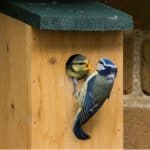Last updated on May 17th, 2022
Our site is reader supported, this means we may earn a small commission from Amazon and other affiliates when you buy through links on our site.
Foxgloves, or Digitalis purpurea, are wild plants found in wooded areas and often along hedgerows. They are fairly short-lived, however, they will self-seed freely, meaning you (and the bees) will be able to enjoy their gorgeous flowers for a long time.
They are easily identified because of the tall flower spikes that are full of trumpet-shaped flowers that are often pink and purple in colour. These are great plants for UK gardens, especially those in shady areas where many other plants won’t grow.
The good news is that the flowers are rich in nectar and because of that, attract lots of butterflies and bees into your garden, so you are also doing your bit to help your local bees, which at the moment, need all the help they can get.
Finally, although they are a type of perennial that usually dies back for winter, they tend to keep their large leaves through winter. They are short-lived and will die after they have finished flowering.
How to plant and care for Foxgloves
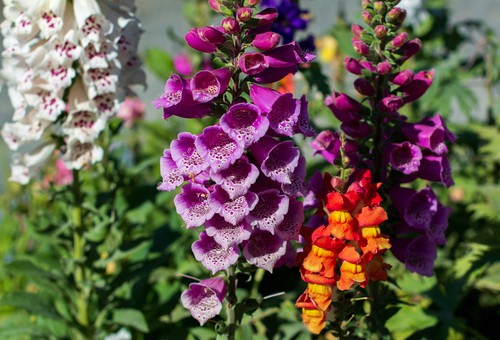
Plant them in deep or dappled shade in light well-drained soil
Foxgloves thrive when they are planted in deep or dappled shade, however, they will tolerate a sunny position too. They prefer lighter well-drained soil and do best if you amend the soil with organic matter like compost. The Digitalis represents a range of varieties, each with unique demands for growing. There are a few varieties that need full sun so it’s best to check before planting, but most varieties will need shade.
Sowing seeds indoors
If you have an existing Foxglove and want to propagate from it, collect the seeds and sow them immediately.
If you sow the seeds indoors, do so from March to early June. Keep the seed tray/containers moist until germination, which is easier to do if you use a propagator with air vents. When sowing indoors, do not cover the seeds once you put them in their seed trays because they require light to germinate and temperatures of around 20°C (68°F).
Once the seedlings are large enough they can be pricked out into smaller 7cm or 9cm pots. Once fully established, they can be planted outdoors after the risk of frost has passed.
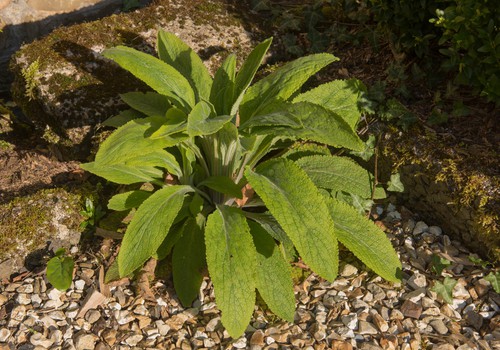
Sowing outdoors in a prepared seedbed
Sow seeds from late spring to early summer in a well-prepared seedbed and keep the soil moist until they germinate. Once they are large enough to handle, space them out so they are around 2ft apart to give them plenty of space to grow. If you let seeds self-sow then space plants out once they are large enough to.
Planting Foxgloves
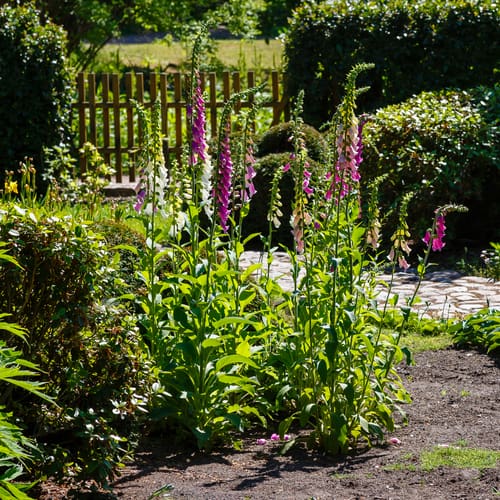
You can plant Foxgloves at any time of the year, with the exception of when the ground is frozen or waterlogged. Dig the area with lots of compost, manure, or leaf mould and make sure the hole is big enough for the rootball.
Learn how to make leaf mould by reading our guide here
When you put the root ball in the hole, adjust it so that it is at the same depth it was growing, and then backfill the area with good quality compost.
Water it well and give it a good layer of mulch around the base where the roots are for extra protection.
Caring for Foxgloves
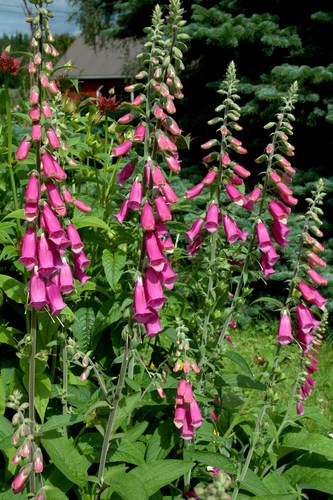
It doesn’t take long to get them established, but during that time be sure to water them regularly. Every spring, give a well balanced, granular fertiliser to the area, such as growmore, and always replenish the mulch because this also helps retain moisture as well as suppress weeds.
It is best to deadhead them after flowering to encourage a second flush. You can also cut back the stems to the ground level, but if you do remove flower spikes remember they won’t self-seed. If they don’t get chance to self-seed, just remember after a couple of years the main plant with die and not return so it will need replacing.
Recommended Varieties

The varieties we would recommend include the following:
- The Digitalis ferruginea is a biennial Foxglove with a short lifespan and yellow/brown flowers.
- The Digitalis grandiflora is a perennial with creamy and yellow coloured flowers.
- The Digitalis ‘Illumination Pink’ is a semi-evergreen and hardy perennial with flowers that boast a bright pink exterior and honey interior.
- The Digitalis x mertonensis is a semi-evergreen perennial with light pink flowers.
- The Digitalis parviflora is a hardy perennial with flowers that are red.
- The Digitalis purpurea f. albiflora is a biennial Foxglove that produces creamy-white coloured flowers.


